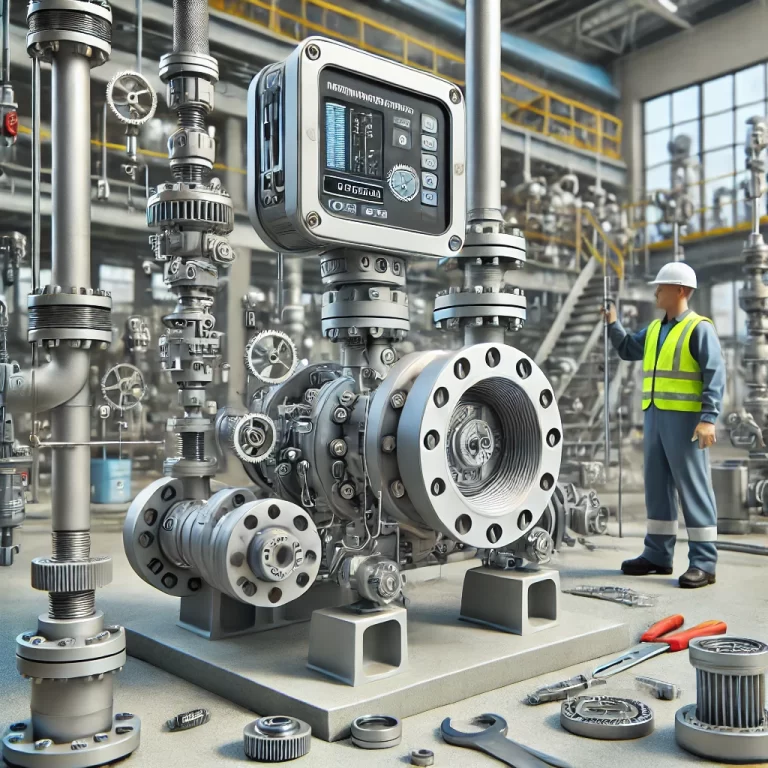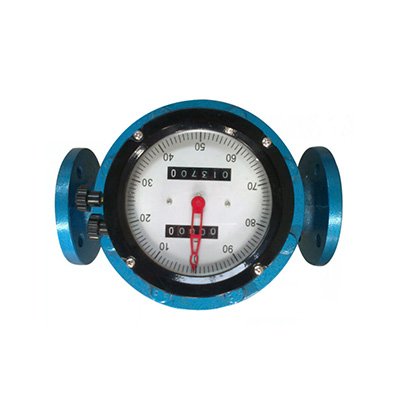Positive displacement flowmeters are widely used in industrial applications to accurately measure fluid flow. However, like any mechanical device, they can experience a variety of issues over time that can affect their performance. Understanding the common problems and their solutions can help ensure the flowmeter operates efficiently. This article outlines potential issues that can arise with positive displacement flowmeters, and provides preventative measures and troubleshooting steps.
1. Inaccurate Flow Measurement
Several factors can cause inaccurate readings from a positive displacement flowmeter, including:
Mechanical Wear
Flowmeters contain moving parts such as gears, rotors, or pistons. Over time, these parts may experience wear due to friction, which can cause increased gaps between parts and result in fluid leakage. This leads to lower measurement values than the actual flow. For instance, in oval gear flowmeters, gear wear can reduce the meshing accuracy, allowing fluid to leak from the gaps, ultimately compromising measurement accuracy.
Viscosity Effects
The viscosity of the fluid being measured plays a critical role in the accuracy of the flowmeter. If the actual fluid viscosity differs significantly from the viscosity used during calibration, measurement errors may occur. For high-viscosity fluids, the moving components of the flowmeter may face increased resistance, causing improper operation and inaccurate measurements.
Temperature and Pressure Fluctuations
Temperature and pressure changes can affect the volume of the measurement chamber in a flowmeter, leading to errors in readings. High temperature or high-pressure environments can cause expansion or contraction of the materials used in the flowmeter, altering its volume. Without proper compensation for temperature and pressure, such changes can result in inaccurate flow measurements.

2. Flowmeter Malfunctions or No Signal Output
Several common issues can prevent a flowmeter from functioning correctly or providing accurate signal outputs:
Blockage
Flowmeters can become blocked if the fluid contains solid particles, sediments, or fibers. These substances may clog the flowmeter’s inlet, outlet, or internal channels, preventing the fluid from passing through the device. For example, in wastewater treatment, the flowmeter may become blocked by debris in the effluent, rendering it unable to measure the flow.
Mechanical Sticking
If internal components of the flowmeter become rusted, deformed, or obstructed by foreign objects, they may get stuck and prevent normal operation. In a rotary piston flowmeter, for instance, the rotor may become blocked by foreign particles, causing the flowmeter to stop functioning.
Electrical Failures
In flowmeters equipped with electronic components (such as those with signal output), electrical failures may occur. Common issues include sensor malfunctions, poor wiring connections, or power supply issues, all of which can result in the absence of a signal output or incorrect readings.
3. Leaks
Leaks in a flowmeter can occur due to a variety of reasons:
Seal Damage
Seals, such as O-rings and packing materials, may deteriorate over time due to aging, wear, or deformation. Once the seals become damaged, the flowmeter can leak, leading to inaccurate measurements and potential environmental contamination. For example, in oval gear flowmeters, damaged shaft seals may allow fluid to leak, affecting performance.
Housing Damage
External forces such as impact, corrosion, or material defects can cause cracks in the flowmeter’s housing. This may result in leakage of the fluid, which could pose a significant risk and necessitate the replacement of the flowmeter.

4. Counter Malfunctions
Counters in flowmeters are used to track the volume of fluid passing through the system. Malfunctions in the counter can affect measurement accuracy.
Counter Jamming
Counter mechanisms can become jammed due to rust, foreign objects, or wear and tear on the internal parts. When this occurs, the counter may fail to record the number of rotations or fluid volume, resulting in incorrect flow readings.
Display Issues
In cases where the flowmeter has a digital display, problems such as black screens, garbled images, or incomplete numbers may occur. These issues are often caused by failures in the display unit, wiring problems, or damaged electronic components.
5. Signal Interference
Flowmeters that rely on electrical signals for output can experience interference, which affects the accuracy of the readings.
Electromagnetic and Radio Frequency Interference
In industrial environments, large motors, transformers, and other electrical equipment can produce strong electromagnetic fields that interfere with the signals from flowmeters. This interference can distort the flowmeter’s output, leading to inaccurate or unstable readings.
Preventative Measures and Troubleshooting
To maintain optimal performance and prevent damage, follow these preventative measures:
1. Install Filters
Install appropriate filters upstream of the flowmeter to capture and remove solid particles, debris, and fibers from the fluid. The filter should be chosen based on the fluid’s properties and the flowmeter’s requirements. Typically, the filter’s mesh size should be smaller than half the minimum flowmeter passage size to effectively remove contaminants.
2. Regularly Clean the Piping System
For fluids that generate sediment or scale buildup, it is essential to periodically clean the pipes. Methods such as chemical cleaning, high-pressure water flushing, or mechanical cleaning should be used depending on the pipe material, fluid characteristics, and the degree of clogging. Regular cleaning helps prevent blockages and ensures smooth operation of the flowmeter.
3. Monitor Fluid Quality
Choose fluids with minimal contaminants. If working with aggressive or high-viscosity fluids, take necessary precautions to prevent damage to the flowmeter. For example, use corrosion inhibitors, reduce viscosity through heating, or dilute the fluid if necessary.

Detecting and Troubleshooting Blockages
1. Monitor Flow Variations
Monitor the flow rate displayed on the flowmeter. A sudden drop in the flow or a zero reading may indicate a blockage. Inspect the inlet, outlet, and internal pathways for any obstructions.
2. Check Pressure Changes
A significant increase in the pressure differential across the flowmeter could indicate a blockage. Use pressure sensors or gauges to monitor upstream and downstream pressure. If an abnormal pressure difference is detected, inspect the flowmeter for possible clogging.
3. Listen for Changes in Sound
When the flowmeter is operating normally, it may produce a distinct sound. If a blockage occurs, the sound may become muffled or disappear entirely. Listening carefully can help identify a blockage, although this method requires experience.
Clearing Blockages
1. Remove Blockages
Once a blockage is detected, clear it promptly. For minor blockages, tools such as wires or toothpicks may suffice. For larger blockages, disassembling the flowmeter may be necessary. Be careful not to damage the internal components during this process.
2. Flush the Flowmeter
For stubborn blockages, flush the flowmeter using water, solvents, or compressed air. Ensure that the cleaning method does not damage sensitive components, especially electronic parts.
3. Repair or Replace the Flowmeter
In cases of severe blockage that cannot be resolved through cleaning or flushing, the flowmeter may need to be repaired or replaced. It is crucial to have a professional technician or manufacturer handle repairs to ensure proper functionality.

Conclusion
Positive displacement flowmeters are reliable tools for measuring fluid flow, but like any mechanical device, they require regular maintenance and attention. By understanding common issues, employing preventative measures, and addressing problems early, you can significantly extend the lifespan and performance of your flowmeter, ensuring accurate and consistent flow measurement.
